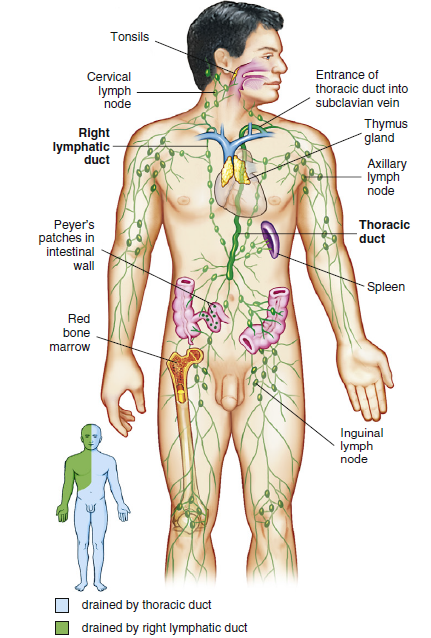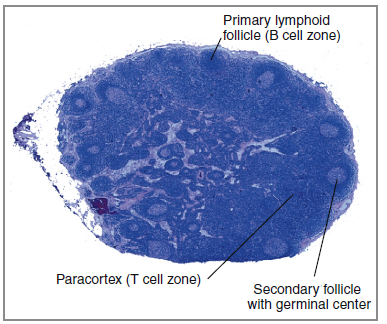Lymph System
The lymph system is a special anatomic characteristic that allows the immune system to keep track of infections and mutant cells in the body. Lymphocytes and monocytes exit capillaries, migrate through the tissue layer and congregate in small lymph channels via hydrostatic pressure and diapedesis.
Antigen activates immunocompetent macrophages, which digest the antigen before presenting it to naive cells. The lymph nodes are reached once activated macrophages have been transported to bigger arteries.
Antigen presentation activates and increases lymphocyte clones capable of reacting to the antigen. Activated lymphocytes travel into lymph arteries that eventually drain into the subclavian vein near the heart after departing a lymph node. Antigen-specific lymphocytes circulate in the bloodstream after that. Activated lymphocytes leave the capillary to mount an immune response in tissue when they reach the site of an infection or malignancy.

Lymph nodes are found at junctions of lymphatic vessels and form a network
that drains and filters interstitial fluid from the tissue spaces. They
are either subcutaneous or visceral, the latter draining the deep tissues
and internal organs of the body. The lymph eventually reaches the thoracic
duct, which opens into the left subclavian vein and thus back into
the circulation.

Cross-section of a lymph node with numerous follicles in the cortex,
some of which contain lightly stained central areas (germinal centers,
where the B cells proliferate), and the central medulla.